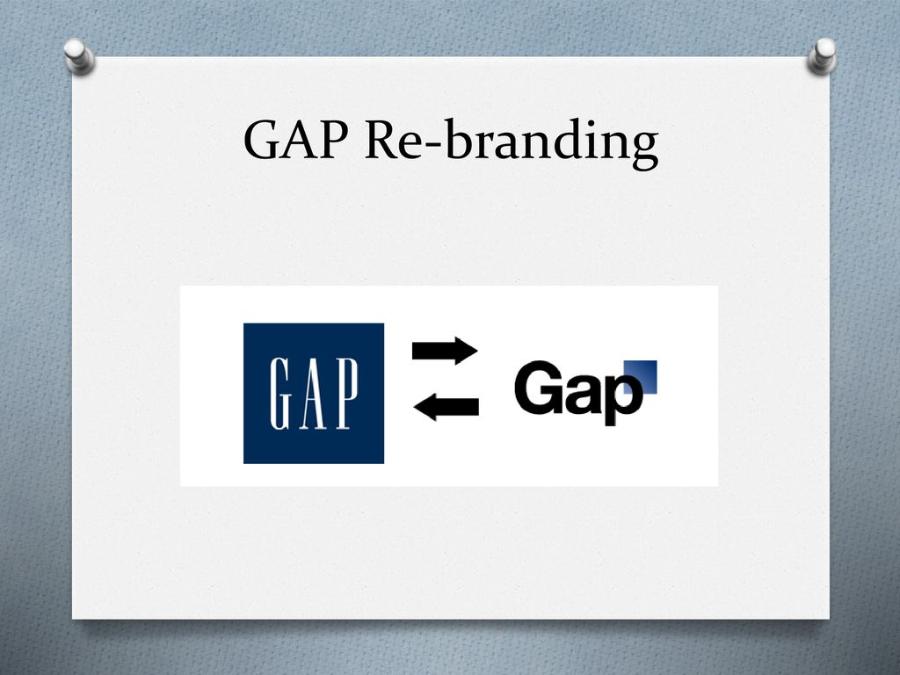Best Selling Products
Expensive Rebranding Mistakes: Valuable Lessons for Businesses
Nội dung
- 1. What is Rebranding and its importance in business strategy?
- 2. Factors to consider when rebranding
- 2.1 Grasp market needs
- 2.2 Improvement instead of complete change
- 2.3 Ensure consistency
- 3. Unrecoverable rebranding disasters
- 3.1. Gap (2010): New logo fails miserably
- 3.2. PepsiCo (2008): An expensive failure
- 3.3. New Coke (1985): A spectacular scam
- 3.4. Yahoo! (2013): Logo redesign and confusing strategy
- 4. Lessons from rebranding disasters
- 4.1 Understand the initial brand value
- 4.2 Choose gradual change
- 4.3 Create customer engagement
- 5. Conclusion
Discover rebranding failures that businesses couldn't recover from. These disasters offer valuable lessons on how to build a lasting brand.

Rebranding is a powerful tool for businesses to create a new, more attractive image. However, rebranding strategies are not always successful. In this article, we will look back at typical rebranding disasters that businesses could not save, along with lessons that companies need to learn to avoid similar mistakes.
1. What is Rebranding and its importance in business strategy?
Rebranding is the process of redesigning a brand's image, including elements such as logos, slogans, colors, product packaging, and even communication methods to better suit market needs or change business strategies. The main purpose of rebranding is to create a difference, attract customers' attention, or simply to better suit trends and times.
.jpg)
However, this process is not always easy. If not done carefully and properly, rebranding strategies can seriously fail, significantly affecting the business image and causing customers to lose trust in the brand.
Rebranding or repositioning a brand. This is an important part of a business development strategy, helping to enhance brand value, improve recognition and strengthen connections with customers. An effective rebranding strategy not only helps businesses adapt to market changes but also creates a difference from competitors, thereby promoting sustainable growth and strengthening market position.
2. Factors to consider when rebranding
When undertaking rebranding, businesses need to pay attention to several important factors to ensure that the rebranding process goes smoothly and achieves the desired goals. They must carefully consider the following factors:
.jpg)
2.1 Grasp market needs
Understanding your target audience and their changing needs is key. This helps businesses create a fresh brand image while still maintaining their personality.
When rebranding, understanding the needs of the market plays a key role in ensuring the effectiveness of the rebranding strategy. Businesses need to conduct thorough market research to understand the trends, desires and expectations of their target customers. Next, researching the market and target customers is an indispensable step to ensure that the new brand reflects their needs and expectations.
At the same time, it is necessary to re-evaluate the current position of the brand in the minds of consumers and identify areas for improvement or innovation. Understanding market needs not only helps businesses build a suitable brand image but also optimizes competitiveness, thereby creating sustainable value in the long term.
2.2 Improvement instead of complete change
Some businesses make the mistake of changing too many elements, causing confusion in the customer's brand identity. Instead of changing everything, make incremental improvements and ensure continuity in the brand strategy.
When implementing rebranding, businesses need to focus on improvements rather than complete changes to ensure that the connection and brand identity are not lost in the eyes of customers. It is important to maintain the core values that have made the brand reputable, while updating new elements to suit market trends and customer needs. This process requires careful research, a clear strategy and a consistent implementation plan to ensure a smooth transition, avoiding confusion or loss of trust from current customers.
2.3 Ensure consistency
Elements of a rebranding strategy must be consistent from logo, website design, to customer communication methods. Consistency helps customers easily recognize the brand and create long-term attachment.
In addition, it also reinforces the core values and messages that the business wants to convey. This includes synchronizing everything from logo design, colors, fonts, to communication tone and marketing strategy. An effective rebranding strategy needs to be built on careful research of the market, target customers and current trends, thereby ensuring that the new brand is not only consistent with the development direction but also creates a strong connection with the public.
In addition, internal communication and specific implementation plans are also important to ensure that all employees understand and support this change. Finally, monitoring and evaluating the effectiveness of the rebranding campaign will help businesses make timely adjustments and optimize the results achieved.
3. Unrecoverable rebranding disasters
Unsalvageable rebranding disasters often stem from a lack of thorough research into the market, target customers, and core brand values.
When a company rebrands without considering cultural and emotional factors of consumers or without maintaining consistency in messaging, the result can be a loss of customer trust and serious financial losses. Typically, a hasty change in logo, name or brand strategy leads to negative public reaction. This highlights the importance of careful planning, expert advice and community input before implementing any major changes to a brand.
3.1. Gap (2010): New logo fails miserably
One of the classic failures in rebranding history is the story of Gap in 2010. When the clothing company decided to change the iconic logo they had used for over 20 years, the result was a strong backlash from customers and design experts.
.jpg)
The new logo was too modern and lacking in character, no longer connected to the style that Gap had previously built. This forced the company to quickly backtrack and reuse the old logo after only 6 days. Although the change was quick, the damage to the image and customer trust was irreparable.
3.2. PepsiCo (2008): An expensive failure
PepsiCo decided to change the packaging design of its products in an ambitious rebranding strategy in 2008. Instead of keeping the familiar image, they opted for a more minimalist style, but the result was not well received by consumers.
Many felt that the changes did not add any real value, and in fact made the product less appealing. Coupled with an ineffective marketing campaign, the redesign did not improve sales, but instead alienated and annoyed customers.
3.3. New Coke (1985): A spectacular scam
It is impossible not to mention the Coca-Cola "New Coke" disaster in 1985. The decision to change the Coca-Cola formula, to create a new flavor, turned out to be a terrible failure. While Coca-Cola wanted to improve the product to compete with Pepsi, consumers reacted strongly to this change. They did not want a different Coca-Cola and asked the company to return to the old formula. Ultimately, Coca-Cola had to reverse its decision and restore the old formula. This is a great lesson in not changing too abruptly a product that is too emotionally attached to consumers.
.jpg)
3.4. Yahoo! (2013): Logo redesign and confusing strategy
In 2013, Yahoo! decided to redesign its logo in an effort to refresh its image. However, this was disappointing for the user community and designers. In addition to changing the logo, Yahoo! also lacked a clear strategy for conveying its message through the new image. The lack of a clear direction in the rebranding process prevented Yahoo! from regaining the attention and trust of customers, causing the company to continue to decline in the following years.
4. Lessons from rebranding disasters
Rebranding is a double-edged sword that can take a business to new heights, but can also cause serious damage if not done carefully and strategically. Here are some important lessons learned from the failures mentioned above:
4.1 Understand the initial brand value
Before making any changes, businesses need to understand what their brand is and why customers love it. If the rebranding is not consistent with those core values, it is easy to lose trust.
Rebranding disasters have left many valuable lessons for businesses. One of the most important factors is understanding the core values and strength of the original brand. When repositioning, if businesses do not capture the values that customers have attached to and love, they can inadvertently lose their loyalty.
.jpg)
At the same time, changing the brand image or message without careful consideration can lead to confusion or negative reactions from the market. Therefore, the rebranding process needs to be conducted carefully, with thorough research and a clear strategy to both refresh the brand and maintain the trust and support of current customers.
4.2 Choose gradual change
Rebranding doesn't have to be a complete revolution. Instead of making drastic changes, gradually improve the important elements that customers still feel attached to.
Past rebranding disasters have provided valuable lessons for businesses considering a change in their brand image. One of the main reasons for failure is sudden change, which is unfamiliar and difficult for customers to accept. Instead, adopting a gradual change strategy, introducing new elements step by step, not only helps maintain familiarity but also gives customers the opportunity to adapt and build a stronger connection with the brand. It is important to listen to customer feedback throughout the process to ensure that the new direction is consistent with the expectations and core values that the brand has built.
4.3 Create customer engagement
Past rebranding disasters have taught valuable lessons, the most prominent of which is the importance of engaging customers in the rebranding process. To avoid rebranding failure, it is important to get feedback from customers and experts before making major changes. This helps businesses understand the market reaction and can make timely adjustments.
A successful rebranding strategy is not just about changing the logo, colors or messaging, but also ensuring that customers – the people who use your products and services – feel heard and understood. Surveys, brainstorming sessions or testing ideas with your target audience can help you identify potential pitfalls and adjust your strategy accordingly. This not only builds trust but also creates engagement, helping your brand maintain its position and create sustainable growth momentum.
5. Conclusion
Rebranding disasters have become expensive lessons for many businesses. Changing a brand is not only a transformation in terms of image but also must ensure connection with customers, maintain core values and brand differentiation. To implement a successful rebranding strategy, businesses need to consider carefully, avoid making mistakes of sudden "shocks" of change. Learning from the failures of predecessors, businesses will be able to build a more solid, sustainable and long-term rebranding strategy.












































